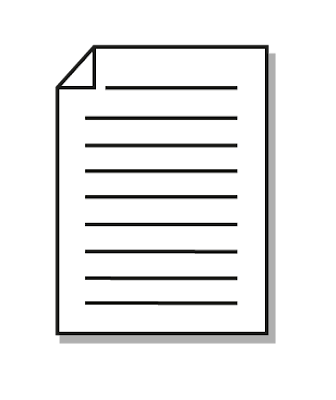
Designer to Client
Hey, maybe you are looking for some ideas on writing a creative brief and dont know where to start? Maybe you need ideas for writing the details for the next website some early pointers for a rebrand? This post has been written to give you, ‘the client’ some rough guidelines for setting a brief. Imagine answering the following…
Purpose & Plan
What is the purpose of the project? Is it to expand the business, launch a new product range or to promote something that you are already offering?
You will need to have some sort of a plan and end goal in mind for the project. If you don’t know what it is that you business needs, that’s OK… maybe you would prefer an initial chat first? Do take into account, without a plan or and end goal, even a loose one, you will end up going around in circles and costing yourself time. Maybe ask yourself some of these questions :-
- What do I want to get out of it? Profits, more followers, leads etc
- What will my return on investment be? (RIO)
- Can this be achieved for the budget?
- Should I do this now or should work on something else first?
- What is the competition doing?
- How can do it differently/better?
Listed a above are some general open ended questions. If you are stuck and would like some initial design consultation and help with project planning get in touch.
Budget
The budget is important to consider as this will affect the amount of time that will be allocated to your project – factoring in deployment, build/design, concept and whether anything else needs to be considered. Below, are 2 methods to factor in – there are many others but for the sake of the article and to give you and idea I have picked 2.
Cascading, fluid, rolling. This method, is far more open-ended financially but allows for plenty of creative and innovative freedom, a designers dream more often than not as this can offer up great results. A draw back with this free flowing approach is that money can keep on going into a project, regular checks on the amount spent so far are a good approach and ball park figure should be offered in the beginning, especially with smaller business with tighter purse strings. So the pros and cons of this.
Pros :
– Offers great results, project continues until a project is at its best
– You dont pay for surplus time in case the project was over estimated on a fixed rate.
Cons
– Can be scary for start ups or businesses that have a very tight budget
Fixed price, this method usually suits both parties, or so I have found, a draw back with this is that sometime contracts and prices need to sometimes be re-evaluated should there be substantial changes to a project specification. In the beginning, a ‘fixed estimate’ will be discussed. beginning, factoring in changes (or tweaks) additional requests will increase the price as more time will be required. But you will also need to have an idea of what you need for a project for a budget.
Pros :
– Allows for more careful budgeting and price conscious projects
– Avoids ‘surprises’ when the bill comes.
– Stipulates clear objectives.
Cons :
– Projects can be underestimated and will need to be reevaluated for the time required.
– If additional features (feature packing) are added part way through it will can unsettle expectations on both parties.
Time Frame
Take into account when you need a project to be completed, things can take time to finish, the designer may be working on several projects at once and they may not all be yours. Also, waiting to hand over all relevant information at the last minute will end in disappointment eg, sending all the photo’s over for flyer an hour before a production deadline or as the designer needs to leave will not make the best of it… Get the relevant information such as, text, photo’s, FTP details etc over in decent time. It is neither fair and shouldn’t be expected that designer will drop everything including free time, family life and other projects to do your work. The earlier, the better! Besides, doing everything last minute just increases risk of failure for a projects.
Target Market
If this is a design project that is yet to have a brand established have you considered who the target market will be? Is this for children, adults, professionals, tourist, artists, trade and so on.
Branding
Do you have an existing brand guidelines for your company? If you have any existing logo, colours, fonts, do’s and don’ts this may be required for the project to be completed.
Deployment
Depending on the desired project, how do you intend to deploy the project? Will this be a small web banner, a flyer, will you be using a printer, will this be a for screen, will it be for print? It is worth considering how this may evolve in the future be it for print or screen. It is easier to scale a large file down or resize a vector than it is to resize a 60 px 60 px logo onto a bricks and mortar shop.
Limitations
Is there anything in the that the designer can’t do? Will it be for a certain target demographic, politically sensitive, have to fit on some something small, needs fit x y z etc etc
I hope this gives some food for thought, if this all looks a bit scary. It isn’t! Its fun and can be a great journey. If you would like to ask a question please feel free to do so.
